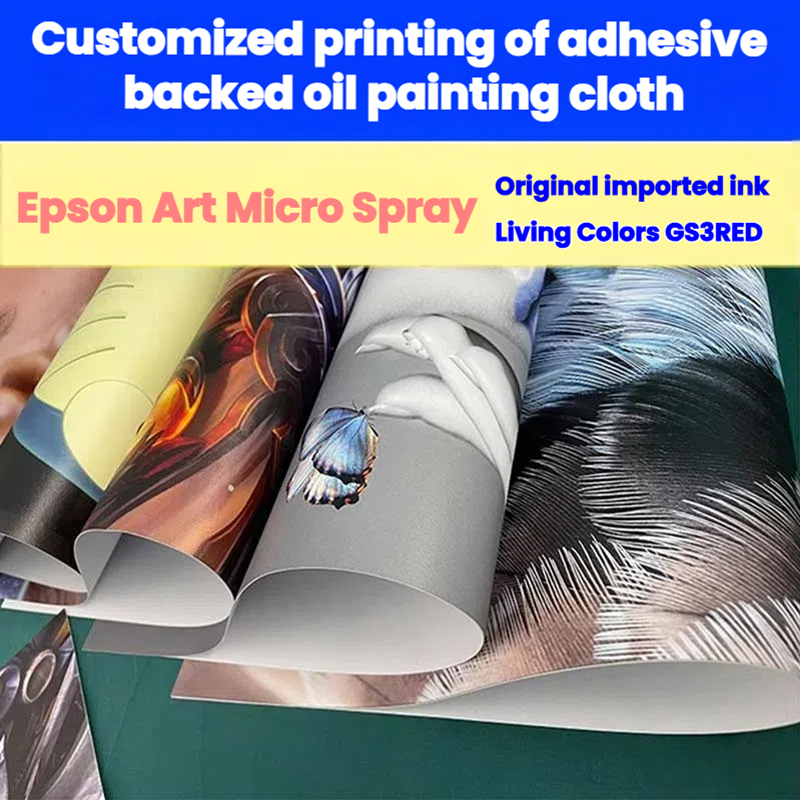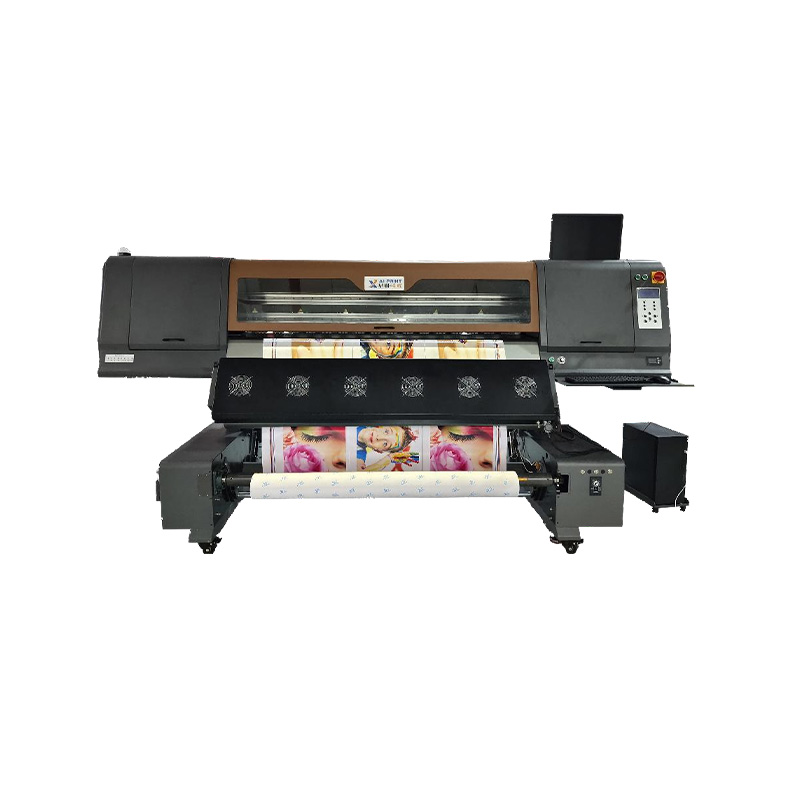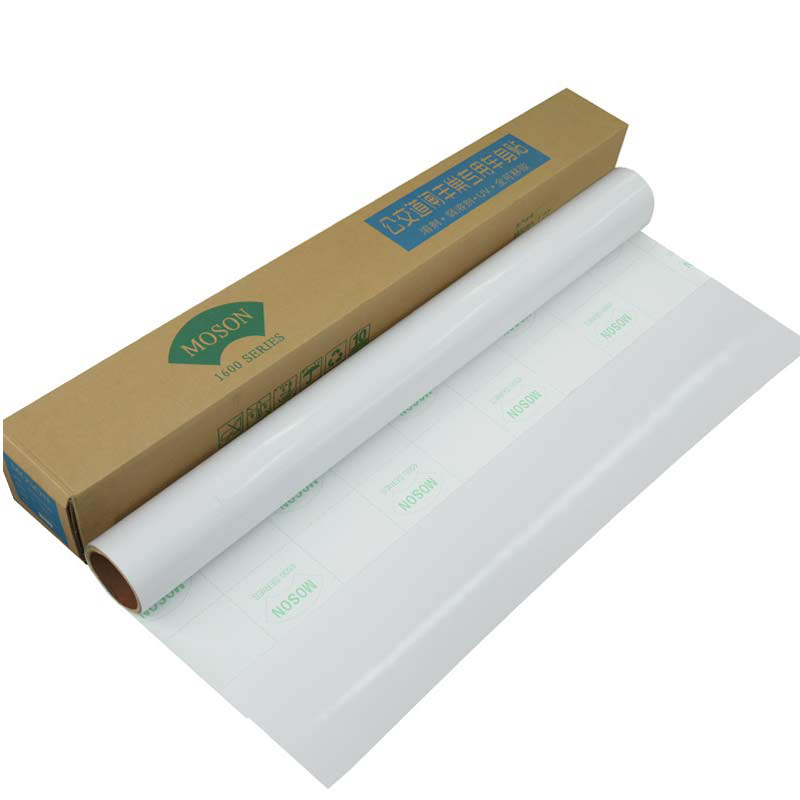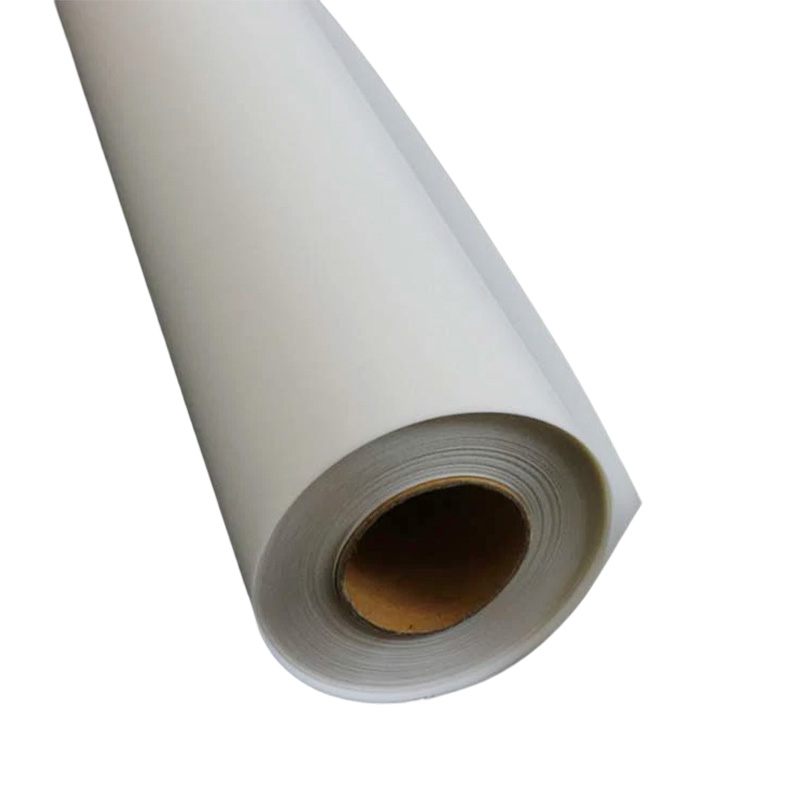Does self-adhesive burlap oil canvas retain the texture of traditional oil canvas?
Release Time : 2025-10-11
With the increasing popularity of digital art and inkjet printing technology, artistic output is no longer limited to traditional brushes and paint. More and more artists, photographers, and designers are turning to high-precision micro-injection equipment to create their works directly on various canvas materials. However, the convenience of technology has not diminished people's pursuit of artistic texture. On the contrary, people are increasingly eager for digital works to carry the warmth and soul of traditional painting. Among the many artistic output materials, self-adhesive burlap oil canvas, with its unique surface structure and visual expression, has become a key medium connecting digital technology and traditional aesthetics. Whether it truly retains the texture of traditional oil canvas is the key to measuring its artistic value and realism.
The charm of traditional oil canvas lies not only in its function as a pigment carrier, but also in its rough yet orderly surface texture. The uneven texture formed by the interwoven flax fibers creates subtle shadows and highlights under the light, giving the painting a sense of depth and breath. The lingering of brushstrokes on the canvas and the penetration of pigment into the texture become the unique "fingerprint" of the work. This texture is not only a visual element but also a tactile memory, a testimony to the interaction between human and material during the artistic process. When a work is printed on smooth paper, even the most accurate colors can easily appear flat and cold, lacking the vividness and warmth of hand-painted works. Therefore, the core mission of self-adhesive burlap oil canvas is to replicate this texture derived from natural fabrics, allowing digital images to possess the authenticity of being "painted."
High-quality self-adhesive burlap oil canvas is not simply a coating applied to ordinary fabric; rather, the base material is meticulously designed to emulate traditional oil canvas. The base fabric is typically made of high-density linen or linen-like fabric, with the thickness and weave density of the warp and weft carefully designed to replicate the natural texture of handwoven fabric. This texture is not a regular grid, but an organic structure with subtle variations, creating a consistent pattern while retaining a natural randomness. When ink is applied, the coating guides the ink droplets to spread evenly between the fibers, preventing excessive smearing while preserving the texture's clear outlines. From a distance, the printed image appears richly colored and layered. Up close, the texture of the canvas is clearly discernible, with light flowing between the undulations, creating a rhythm of light and shadow similar to that of traditional oil paintings.
More importantly, this texture is more than just a visual imitation; it resonates psychologically. When viewers or collectors approach the work and gently stroke the surface, the subtle undulations felt by their fingertips instantly awaken a sense of traditional painting. It reminds them that this is not just a "print" but a work of art with a physical substance. For artists, this texture enhances their creative continuity. They can output digital drawings directly onto the burlap, eliminating the need to consider how to translate the digital draft into a physical painting. The boundary between digital and physical disappears in the unity of texture.
The adhesive backing further enhances its practicality. Traditional oil canvas requires specialized stretching and gluing, a tedious and difficult process to adjust. Self-adhesive burlap oil canvas, with its built-in adhesive layer, can be directly attached to wood, PVC, or walls, simplifying the mounting process while maintaining a smooth surface. Even when attached to a hard substrate, the surface texture remains clearly visible, unaffected by the adhesive, ensuring a complete, authentic experience from creation to display.
Furthermore, advances in coating technology have enabled burlap to retain its texture while offering exceptional color reproduction and durability. The UV- and scratch-resistant protective layer not only extends the lifespan of the work but also ensures that the texture remains intact, protected from wear and stain during long-term display.
In summary, self-adhesive burlap oil canvas successfully preserves the texture of traditional oil canvas through carefully selected materials, a restored weave structure, and an optimized coating process. It is not only a technological achievement but also a tribute to artistic tradition. Choosing this material imbues digital creation with the warmth of handcraft, imbuing each printed work with a tangible soul and safeguarding the pristine authenticity of art amidst the vicissitudes of time.
The charm of traditional oil canvas lies not only in its function as a pigment carrier, but also in its rough yet orderly surface texture. The uneven texture formed by the interwoven flax fibers creates subtle shadows and highlights under the light, giving the painting a sense of depth and breath. The lingering of brushstrokes on the canvas and the penetration of pigment into the texture become the unique "fingerprint" of the work. This texture is not only a visual element but also a tactile memory, a testimony to the interaction between human and material during the artistic process. When a work is printed on smooth paper, even the most accurate colors can easily appear flat and cold, lacking the vividness and warmth of hand-painted works. Therefore, the core mission of self-adhesive burlap oil canvas is to replicate this texture derived from natural fabrics, allowing digital images to possess the authenticity of being "painted."
High-quality self-adhesive burlap oil canvas is not simply a coating applied to ordinary fabric; rather, the base material is meticulously designed to emulate traditional oil canvas. The base fabric is typically made of high-density linen or linen-like fabric, with the thickness and weave density of the warp and weft carefully designed to replicate the natural texture of handwoven fabric. This texture is not a regular grid, but an organic structure with subtle variations, creating a consistent pattern while retaining a natural randomness. When ink is applied, the coating guides the ink droplets to spread evenly between the fibers, preventing excessive smearing while preserving the texture's clear outlines. From a distance, the printed image appears richly colored and layered. Up close, the texture of the canvas is clearly discernible, with light flowing between the undulations, creating a rhythm of light and shadow similar to that of traditional oil paintings.
More importantly, this texture is more than just a visual imitation; it resonates psychologically. When viewers or collectors approach the work and gently stroke the surface, the subtle undulations felt by their fingertips instantly awaken a sense of traditional painting. It reminds them that this is not just a "print" but a work of art with a physical substance. For artists, this texture enhances their creative continuity. They can output digital drawings directly onto the burlap, eliminating the need to consider how to translate the digital draft into a physical painting. The boundary between digital and physical disappears in the unity of texture.
The adhesive backing further enhances its practicality. Traditional oil canvas requires specialized stretching and gluing, a tedious and difficult process to adjust. Self-adhesive burlap oil canvas, with its built-in adhesive layer, can be directly attached to wood, PVC, or walls, simplifying the mounting process while maintaining a smooth surface. Even when attached to a hard substrate, the surface texture remains clearly visible, unaffected by the adhesive, ensuring a complete, authentic experience from creation to display.
Furthermore, advances in coating technology have enabled burlap to retain its texture while offering exceptional color reproduction and durability. The UV- and scratch-resistant protective layer not only extends the lifespan of the work but also ensures that the texture remains intact, protected from wear and stain during long-term display.
In summary, self-adhesive burlap oil canvas successfully preserves the texture of traditional oil canvas through carefully selected materials, a restored weave structure, and an optimized coating process. It is not only a technological achievement but also a tribute to artistic tradition. Choosing this material imbues digital creation with the warmth of handcraft, imbuing each printed work with a tangible soul and safeguarding the pristine authenticity of art amidst the vicissitudes of time.







